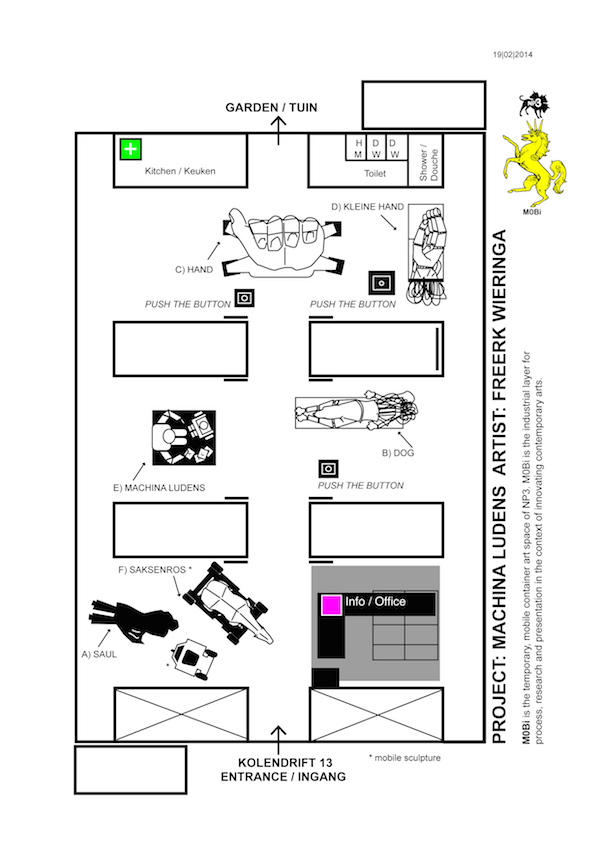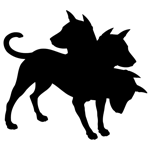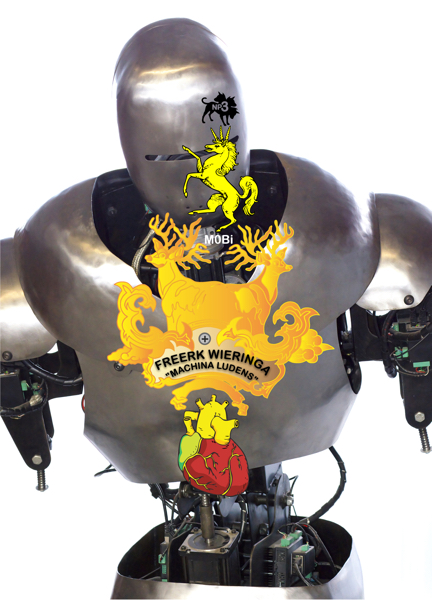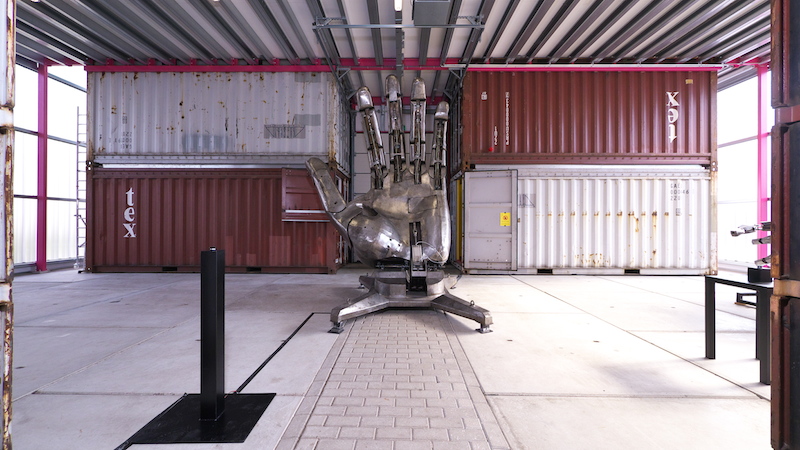
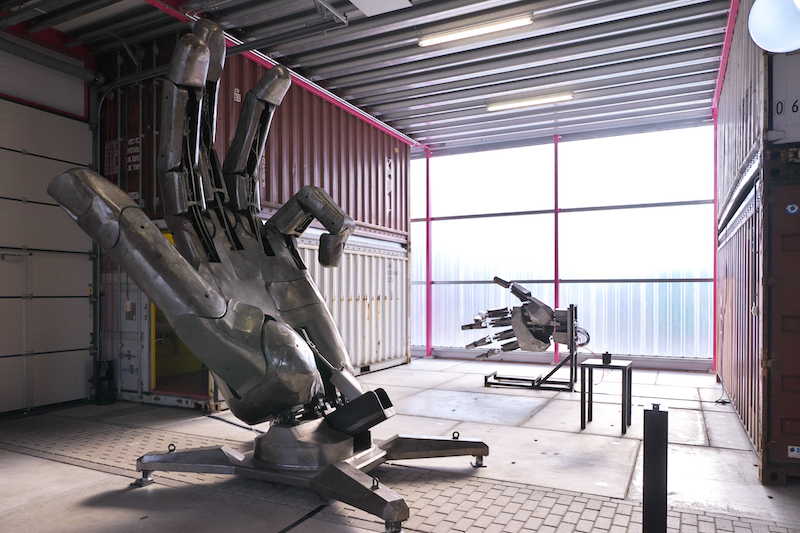
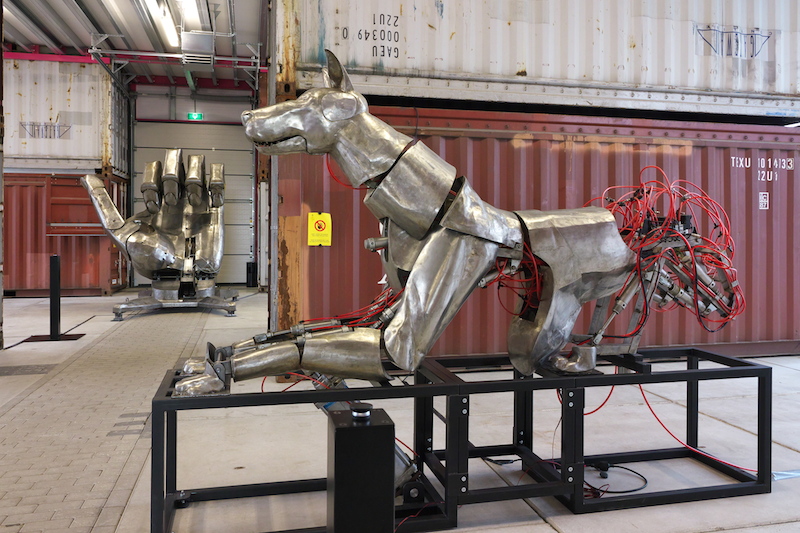
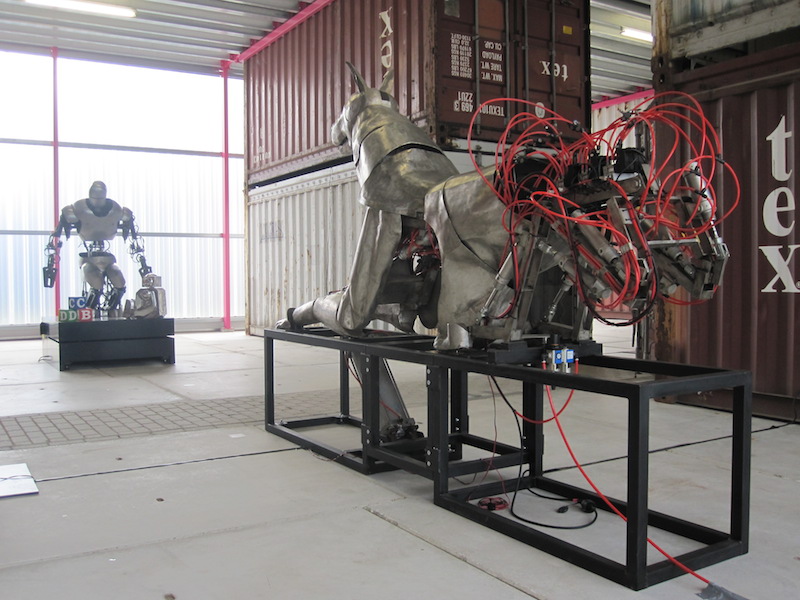
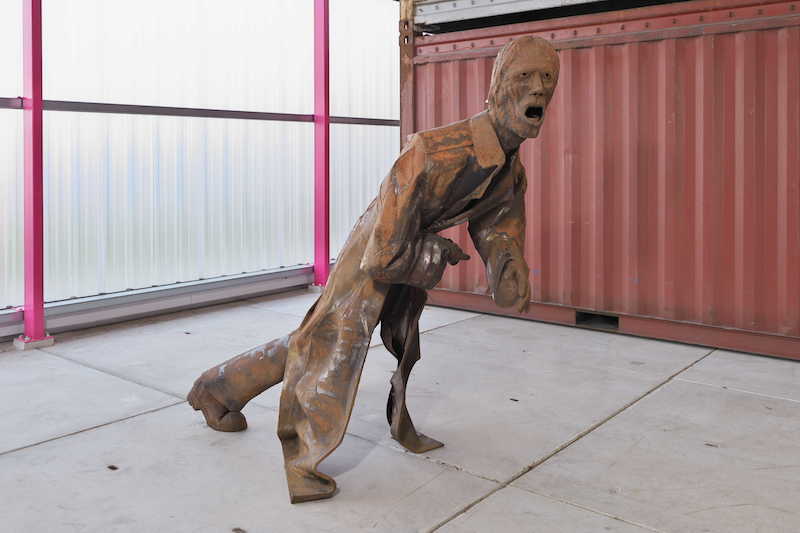
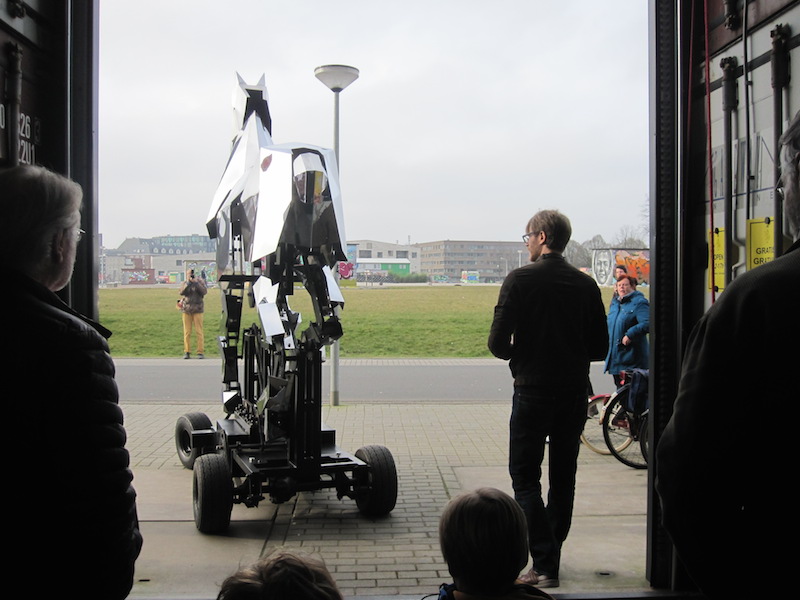
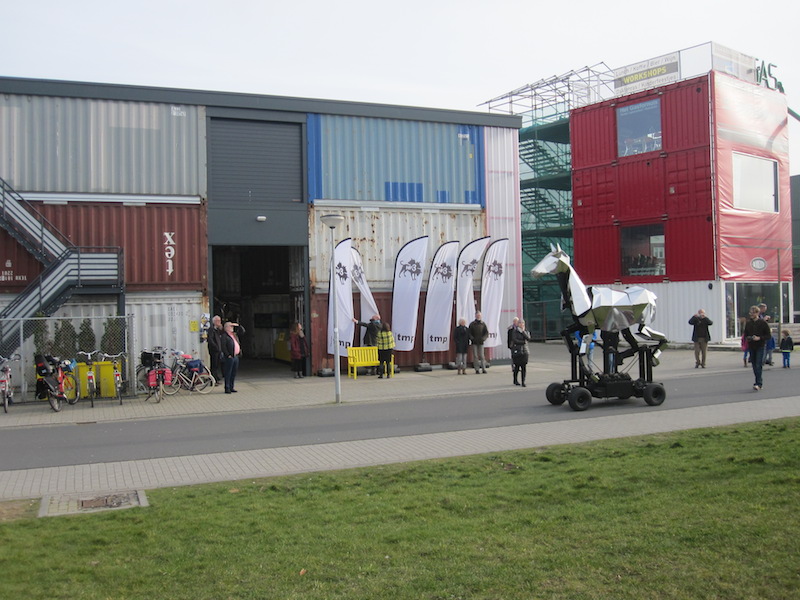
FREERK WIERINGA – MACHINA LUDENS
Exhibition: February 19 until April 19, 2014
Midissage: Friday March 14, 16-19 hrs
Location: M0Bi
MACHINA LUDENS
In her container art space NP3 presents the experimental kinetic landscape of the artist Freerk Wieringa. The iconic meters high steel sculptures are a perfect mix of advanced industrial technology and craftsmanship. From ancient forging techniques to contemporary, complex technology. They are more than just ‘sculptures’, tranquil, moving, interact and keep renewing their relationship to the environment. Giant robots come alive through computer-controlled engines, pneumatics and sensor technology and interact with the visitor.
A) SAUL, 2002
The work Saul is the oldest and only non-moving work in the exhibition. It represents King Saul who prounces himself on his sword after a major military defeat, as in a painting by Bruegel. Saul is inspired by the science fiction cult movie ‘The Matrix’ and paintings by Bruegel. In particular, the realism and humor in the work of Bruegel and the ‘freezing’ of movement in relation to time in ‘The Matrix’ fascinated and inspired Freerk. Saul has been important in the next step, from the motion in sculptures, to develop sculptures in motion.
B) DOG, 2005
Dog is the first complex moving work of Freerk. The work is made of stainless steel and the movement is computer-controlled. The dog rises above the visitor and starts barking. For the paws Freerk used stainless steel spoons collected among others at second-hand shops. At that time he wasn’t able to forge the curves of these spoons.
C) HAND, 2006
Hand is the biggest work that Freerk has developed so far, a ‘blow up’ of a human or divine hand, cold forged from plate steel. The idea stems from a fascination for heraldry and alchemy and refers to the hand of God and the hand in alchemy. The hand of God is generally represented reversed, reaching from heaven, while the alchemy hand appears the other way around. An icon for the beginning science and quest for intellectual or earthly enlightment.
D) KLEINE HAND, 2010/2014
The small hand is a continuation of the work Hand. The mechanical movement in this work is controlled by levers, one cylinder controlles a whole finger. The design is low-polygon, it is the first work in which Freerk applied this style.
E) MACHINA LUDENS, 2011/2012
Machina Ludens or playing machine is, regarding computer-controlling, the most complex work in the exhibition. The skin has been forged in the old medieval way, in the coal-fired smith fire. Machina Ludens is a study on the reaction and attitude of the spectator on fictitious, artificial life. Hereby Freerk has deliberately chosen a stereotypical robotic appearance, a robot that ‘sees’ spectators and responds to his position. The visitor is pleasently surprised when the technique comes alive.
F) SAKSENROS, 2013
Saksenros is a modern version of the Twente steed. The reflective surface of the horse, the environment in which it manifests itself reflected in the moving work and optically absorbed in his environment, the perfect camouflage. The futuristic design and advanced technology gives the work the identity of ‘Fremdkörper’. With Saksenros Freerk wants to break through the traditional and often conservative idea of rural beauty, and establish a link between contemporary art and cultural heritage.
